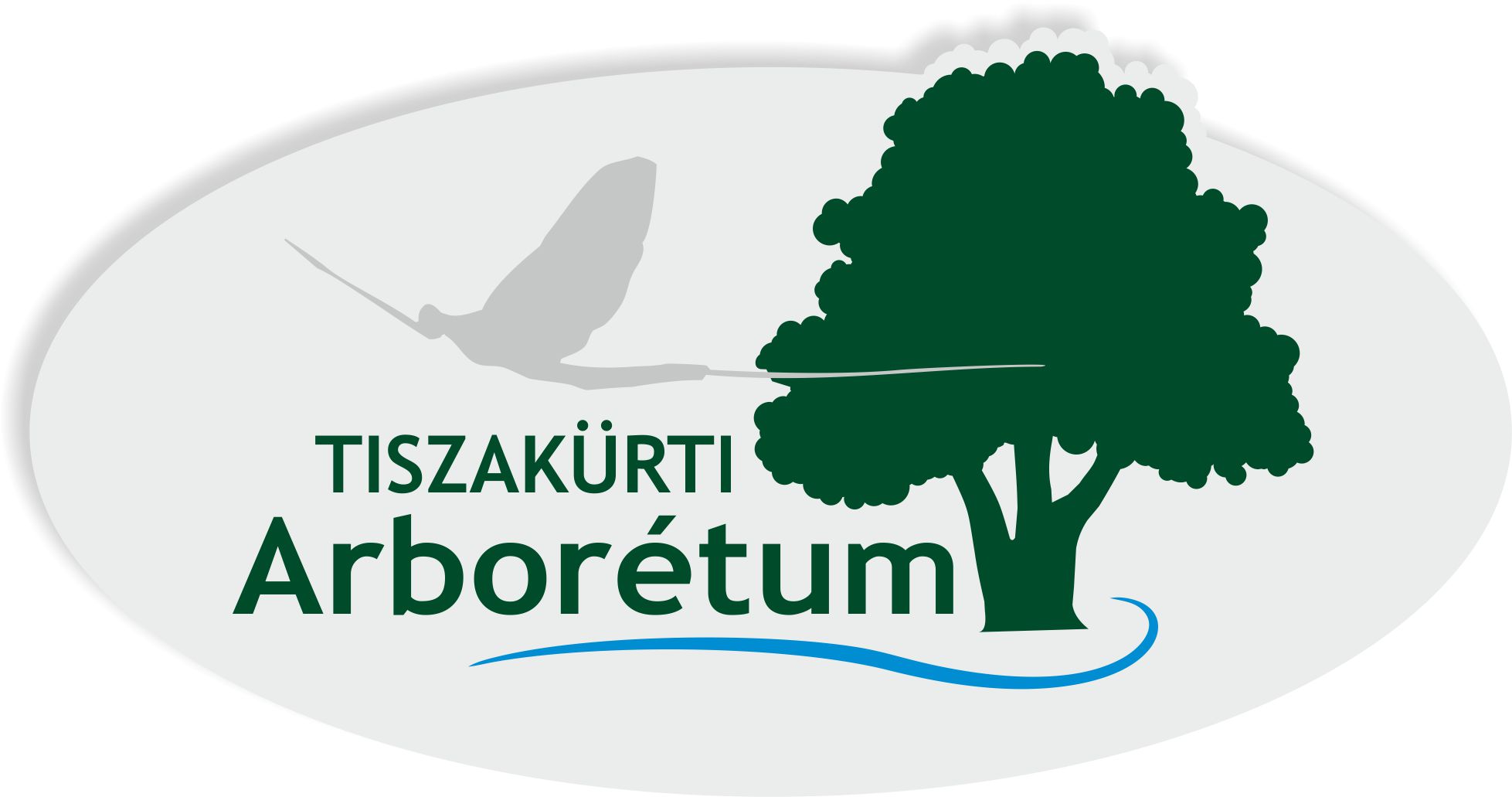Tiszakürt Arboretum NCA
Tiszakürt Arboretum Nature Conservation Area
1. The past and present status of the area
The son, Péter Bolza (1823-1881) and the grandson, József (1853-1940) of Count József Bolza Sr. (1780-1862), a bodyguard from Vienna and the creator of the Anna Grove in Szarvas, established the Arboretum of Tiszakürt in 18. (Meanwhile, the Arboretum of Szarvas was further developed by Pál Bolza, their cousin). Respecting nature’s ways, they left the original landscape undisturbed and introduced new elements into the natural background. The area of the Arboretum lies close to the River Tisza and a former ox-bow lake influences and enriches the garden. A nice birchwood bridge stretches over the river within the park. The arboretum was managed exemplarily until the death of Count József in 1940. The garden was ruined and plundered during the war and the nationalisation during the 1950s. Alajos Bauecker from Vácrátót, a renown expert of the Arboretum of Szarvas was asked to oversee the reconstruction of the botanical garden at the end of the 1950s. During the restoration of the ‘Old-garden’, a new access path was built and around 2000 individuals of 400 plant species were planted by 1974. Ornamental carvings - offered by the artists of the carving camp operating here between 1974 and 1984 - decorate the garden. The idea and the opportunity of enlargement emerged during that period. In 1975, the area reached 27 hectares already. In line with contemporary fashion, the garden was to be filled with a taxonomic arrangement of native trees and shrubs. This idea was not implemented after all, because the different species demanded very different conditions. The failure was mostly due the defective original plan that needed to be redesigned thoroughly. The area was enlarged to 33 hectares. The managment of the area (the Szolnok County Council) provided financial support for enlarging the garden to encompass 1500 species. There is a possibility to admit 4-5000 more species.
The Arboretum with its 60 hectares has been a significant local nature conservation area since 1971.
2. Description and nature conservation of the area
In a survey published by József Papp in 1965, there were 288 tree and shrub species that had come from Europe and other parts of the world: they are native to Asia from Korea to the Himalayas or to the New World from Canada to Mexico. The largest, old tree specimens are the following (with the girth measured breast-high in cm): Pencil Cedar /100/ and Juniperus sabina /110/, Norway Spruce /205, 215/, Colorado Spruce /110/, Black Pine /155, 215/, Weymouth Pine /160, 255/, Douglas Fir /150/, Swamp Cypress /145, 240/, Box-elder /290/, Horse-chestnut /265/, Hazelnut /65 and 9m high/, Turkish Hazel /170 and 20m high/, Eleagnus angustifolia /220 and 20m high/, Honey-locust /170/, London Plane /355, 380 and 545/, Pin Oak /255/, Pedunculate Oak /260, 320/. The biggest one of all is a very old /450/ standing alone in a clearing. It is 25m high and projection of its foliage is 32m. There is a Red Oak /255/ and a Weeping Willow /270/. Last but not least, we should not forget the old Yew having 150 cm girth at the lowest ramification.
The most important values can be found in the ‘Old Garden’. They are the above listed trees that reached the age of Methuselah, first of all coniferous trees, Planes, Oaks. The recently planted rarities are the following: Silver Firs, Swamp Cypresses and Colorado Spruces. Beside the blooming shrubs, there are Alpenroses (Rhodondendron sp.) radiating an alpine atmosphere which is unusual in the Great Hungarian Plain.
The short and incomplete list of species shows a close relationship with the ‘Pepi-garden’ of Szarvas: among the coniferous trees Silver Fir (Abies alba), Grecian Fir (A. cephalonica) Algerian Fir (A. numidica), Spanish Fir (A. pinsapo), Cilician Fir (A. cilicica), Veitch's Silver Fir (A. veitchii), Cowtail Pine (Cephalotaxus harringtonia), Chinese Ginko, Chinese Juniper (Juniperus chinensis), Pencil Cedar /one of them is 80 years old and its girth was 3.4m in 1992/, Larch, Giant Sequoia /it is 80 years old and its girth was 1.8m in 1992, Weymouth Pines, /one of them is one hundred years old/, Douglas Fir, Swamp Cypress, Thujas, Yews and Hemlocks (Tsuga sp.). Among the deciduous trees and shrubs we have to mention the Maples, Horse Chestnuts, the Berberis sp., Boxes, (Calychantus sp.), the Judas-tree (Cercis siliquastrum), Turkish Hazels, (Deutzia sp.), (Lonicera sp), the Gutta-percha tree (Eucommia ulmoides), the Kentucky Coffee-tree (Gymnocladus dioicus), Hydrangea sp., Hollies (Ilex sp), Hypericum sp., Tulip Trees, Northern Japanese Magnolias (Magnolia kobus), Mahonoa sp., Paeonia sp., Paulownia (Paulownia tomentosa). There are more Plane trees that are several metres in girth, for example the one with three branches has a 9-metre-girth. Beside the Pedunculate Oak, there are other representatives of the Oak trees: Red Oaks and Turkey Oaks. Beauties of the shrubs are the Rhododendron sp., varieties of Syringa sp., Thorns (Crataegus sp.), Hollies (Ilex sp.), Aucuba sp., Skimmia sp. Other remarkable trees of the Arboretum are the Limes, Elms, Chinese Cedar (Cedrela sinensis), the Persian Ironwood (Parottia persica) and the Albizia julibrissin.
Every season keeps in store its beautiful surprises for visitors. Early spring brings freshness with the white, pink, purple and bright red coloured trees and shrubs, the protective foliage gives a pleasant shade in the summer, and one can enjoy the autumn colours turning to yellow from red or a good walk out in the clear winter air.
Opening time:
March: 8.00-17.00, mondays closed
From April to September 30.: 8.00-18.00, mondays closed
October: 8.00-17.00, mondays closed
November: 8.00-16.00, mondays closed
1-12 December: only weekdays from 8.00-14.00, entrance from the Rózsa street
15 December - 4 January 2026: closed
Group guidance with previous registration
Entrance fee:
Adult: 1900 HUF/Person
Student, reduced (6-26 years, over 65 years): 1400 HUF/Person
Child (3-6 years): 800 HUF/Person
Family (2 adults and 1 or 2 children): 4800 HUF/Family
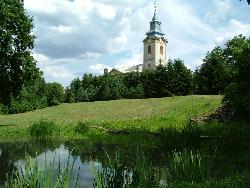
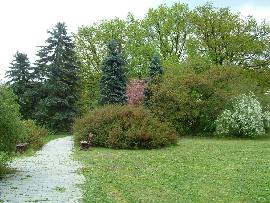
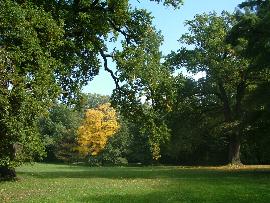
Map of the Tiszakürti Arboretum:
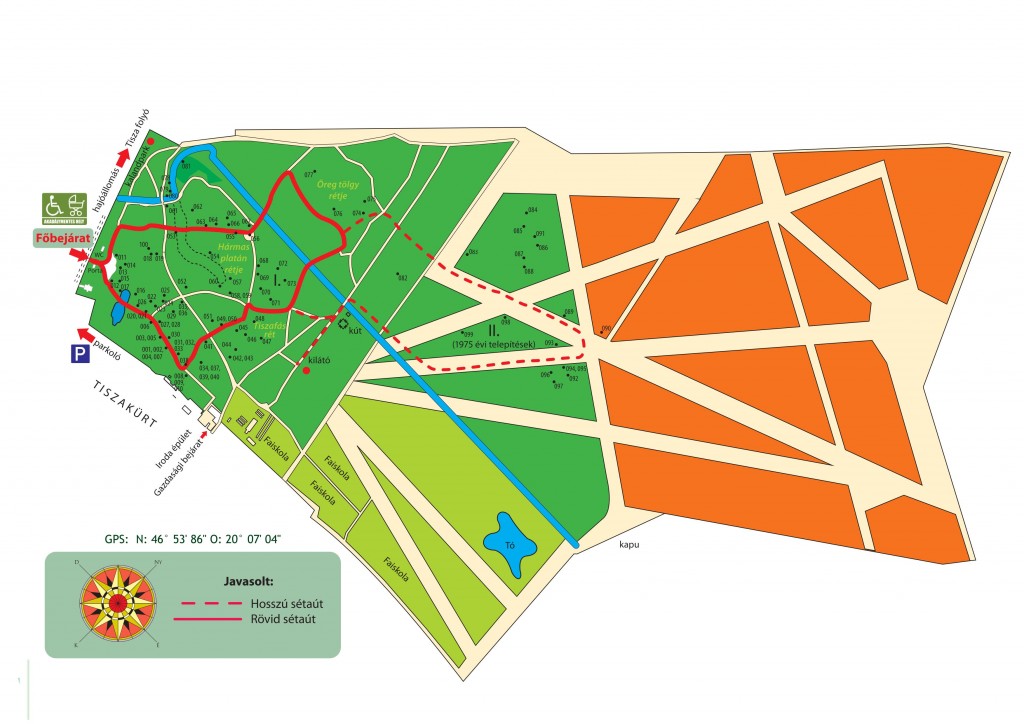
Tiszakürt Arboretum
Tiszakürt, Bolza gróf str. 5.
Phone number: +36 56 568 020
E-mail: arboreta@hnp.hu
